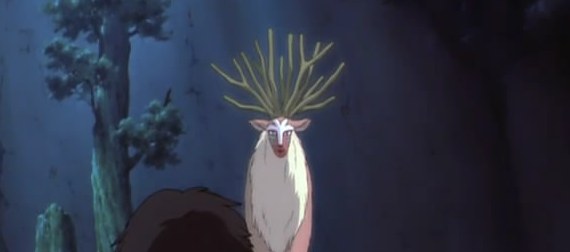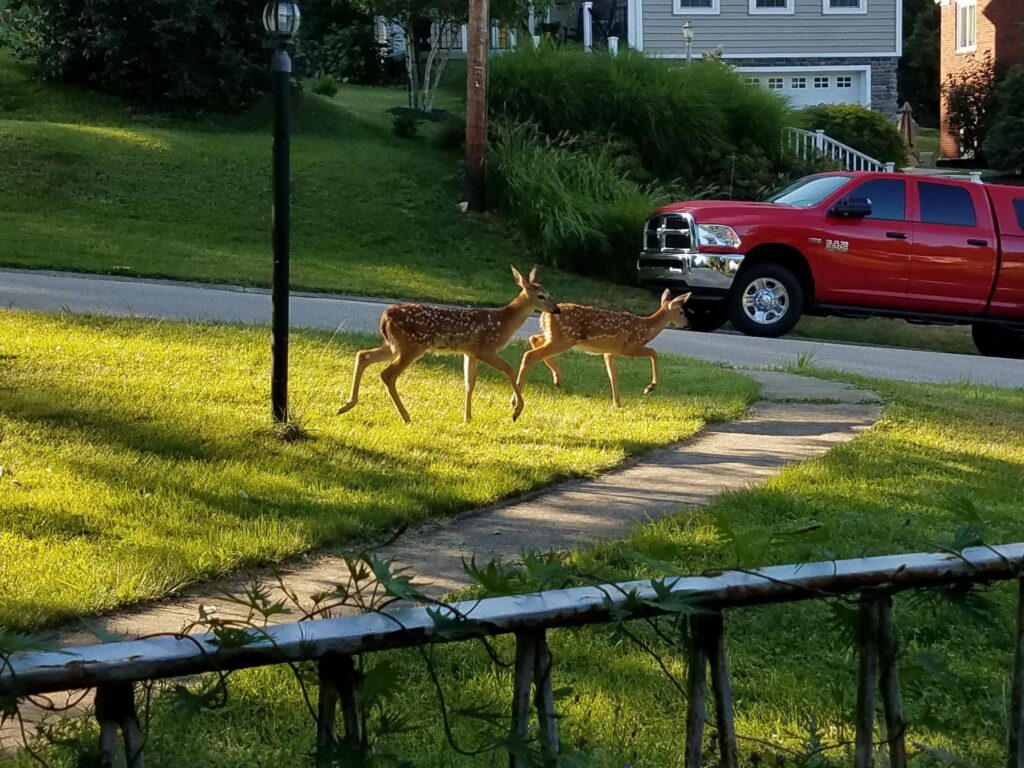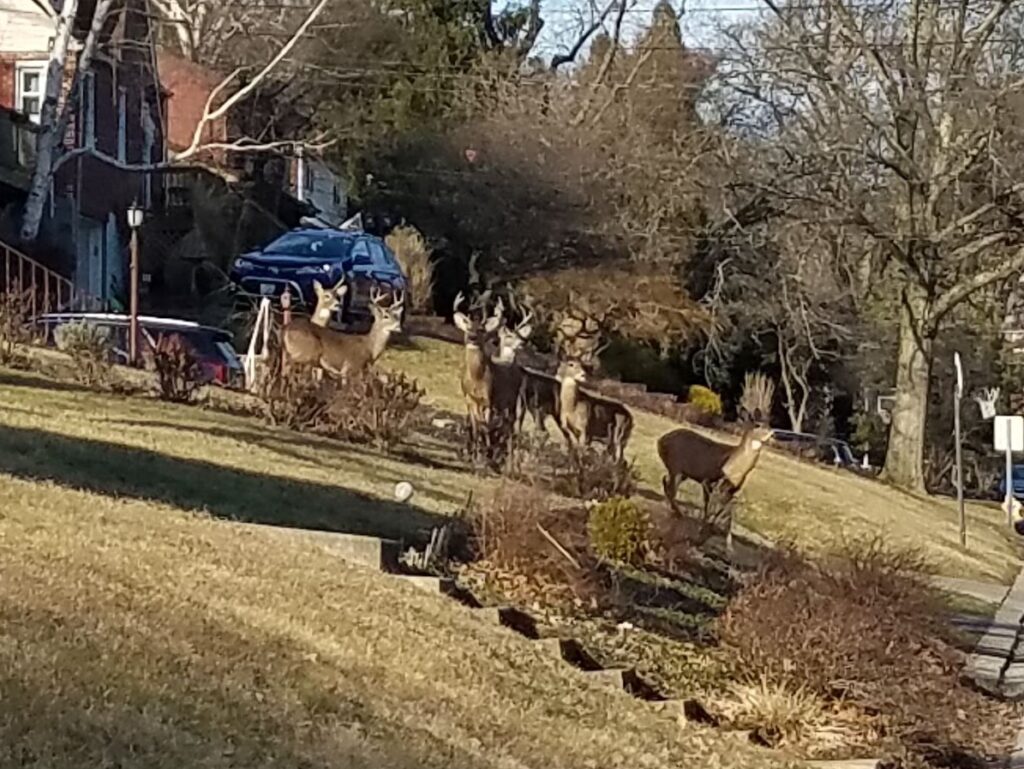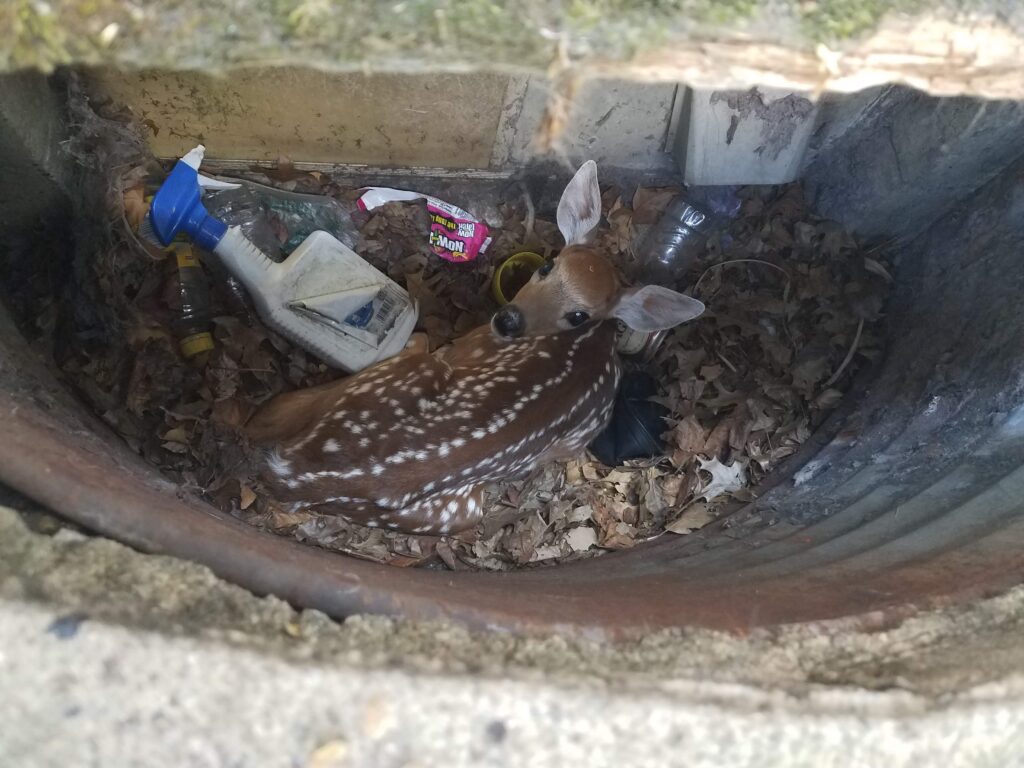I know I’ve watched “Bambi” at least once in my life, most likely in kindergarten, but I don’t remember much, and I’m not entirely sure I’ve seen the whole thing. It is highly likely I just blocked out the more traumatic parts, of which there are several. That, or we just turned off the video because it was time to go home. Either way, one thing I can assume is that whatever I saw was highly influential on my developing brain in forming my values regarding the importance of nature and the responsibility we humans have for stewardship of the earth (which, I’m sure, was Walt Disney’s goal).
Deerspotting
Regular readers of this blog know that I do try to live my life in a responsible way that minimizes my impact on the planet and even actively supports certain at-risk plants and animals native to my corner of the world. In doing that, I also try to deter others that are less welcome (e.g. various weeds, [1],[2] bugs, [3],[4] and larger animals [5],[6]). The deer especially are neighborhood visitors I’ve loved to watch but needed to watch closely because of their preference for my flowers, not my weeds.

Image credit: [7]
The first time I ever visited Christian at his house (now our house), I pulled into the driveway and saw a number of deer in the neighbor’s yard. Deer were very uncommon in my neighborhood growing up, so I was absolutely enthralled seeing them so close (and seeing that they were clearly unconcerned with my presence). Christian and I still laugh about how my attitude has changed from wide-eyed admiration eight years ago to a not-uncommon present-day interaction that involves me banging on the window and yelling at them to get away from my black-eyed Susans.
All that said, I do still love watching them work their way through the neighborhood. Especially over the past three years, as we’ve spent more time at home, we’ve had much more opportunity to observe the regular guests to our yard. We have a couple family groups that we recognize, including a larger set of two does and four juveniles that all had their spots two summers ago. Though, since males generally stay with their mothers for one year and females for two, it is likely that all four young does have now set off on their own.

The Next Generation
Males are typically old enough to mate at about 1.5 years old: the first fall they’re away from home. Female sexual maturity is partly dependent upon age but also on surrounding population density and food availability. Therefore, reproductive age for females can sometimes be as young as six months, but it is more commonly three times that. Mating season, or “rutting,” for white-tailed deer typically happens in October or November, triggered by the shortening of daylight hours. Fawns then start appearing the next May or June, with mothers carrying one, two, or sometimes three at a time.[8]
We have had some limited opportunity over the years to see fawns hanging out in our neighbor’s yard, usually along her treeline, which borders another yard, not a street or alley. While we can’t get close, we have invested in a high-quality pair of binoculars – mostly for watching our neighborhood feral kitties, but they work just as well for deer, birds, and other random animal visitors. As our yard has become more of a nature preserve over the years (supporting a healthier insect population, followed by more birds, and so on), I have become more used to various animal noises and better still at recognizing them. However, last weekend as I worked on a long-overdue home improvement project, I heard something completely new.

It wasn’t a cat, and it wasn’t a bird, though I did wonder briefly if our mockingbird had added something new to its repertoire (I swear it has mimicked a ringing phone recently). My last – and best – theory was that one of the neighborhood kids had gotten his hands on a kazoo or a small vuvuzela.[9] I was content to leave it a mystery and get back to my work, but the noise continued and became more insistent over time, sounding somewhat desperate. Concerned that there was an animal in distress, I went to investigate.
Noninvolvement
The noise led me to my neighbor’s yard, to her back porch, and then to a window well that was half-covered with a plank of wood. Inside, there was a little fawn, who clearly had no idea what to make of me. It did not seem to be in any kind of physical distress, but rather – I surmised – was afraid of being left alone. I couldn’t resist snapping a few quick pictures, but then left after encouraging it to be quiet until its mama returned. After getting back to my house, I shared the photo with some family and friends, and the responses I received were even more surprising than finding the fawn: almost everyone asked if I had rescued it. I knew that my next blog post would have to be a PSA about baby deer.

As I detailed in last week’s post about robins,[10] it is very often the best course of action not to get involved with nature, as tempting as it may be to try to help. Seemingly “abandoned” fawns are often not: their mothers will frequently hide them for a few hours while foraging for food and will come back to retrieve them later. Many fawns are “rescued” each year by well-meaning but uninformed individuals who ultimately endanger the fawn by removing it from the care of its mother – even certified wildlife rehabilitation centers can’t take the place of a mother who knows what she’s doing. Some people actually try to raise “rescued” fawns on their own, which (similar to the robins) is illegal and often ends poorly. Times you should call an expert include when the fawn has been alone for more than a day, if it appears to be injured, or if there is a dead doe nearby.[11]
A few hours later, I went back to check on the baby, and it was gone. I actually waited to tell my neighbor about the whole episode because part of me was afraid that she had found it and called animal control to come pick it up. Ultimately, though, I saw the opportunity for a teachable moment and decided I needed to risk sacrificing the happy story in my head for the benefit of future fawns. (Fortunately she had not called animal control, AND now she knows that it’s best to do nothing should her yard be used as baby deer daycare again.)
~
I hope you have the opportunity to experience this beautiful part of nature from a distance this year. If you do, please share your stories and photos below!
Thanks for reading!
[1] https://radicalmoderate.online/bad-fences-make-good-neighbors-catchweed-and-pokeweed/
[2] https://radicalmoderate.online/bad-fences-make-good-neighbors-poison-ivy/
[3] https://radicalmoderate.online/integrated-pest-management-termites/
[4] https://radicalmoderate.online/insect-warfare-aphids/
[5] https://radicalmoderate.online/groundhog-day/
[6] https://radicalmoderate.online/organic-lawn-care-milorganite/
[7] https://canime.wordpress.com/2012/03/30/did-swath-steal-from-princess-mononoke/
[8] https://en.wikipedia.org/wiki/White-tailed_deer
[9] https://www.goal.com/en-gb/news/goalpedia-what-happened-to-vuvuzela/1c324r4ywrup8174rm5p8oyl5g
[10] https://radicalmoderate.online/spring-babies-this-bird-has-flown/
[11] https://blog.nwf.org/2015/04/finding-a-fawn-what-to-do/
0 Comments